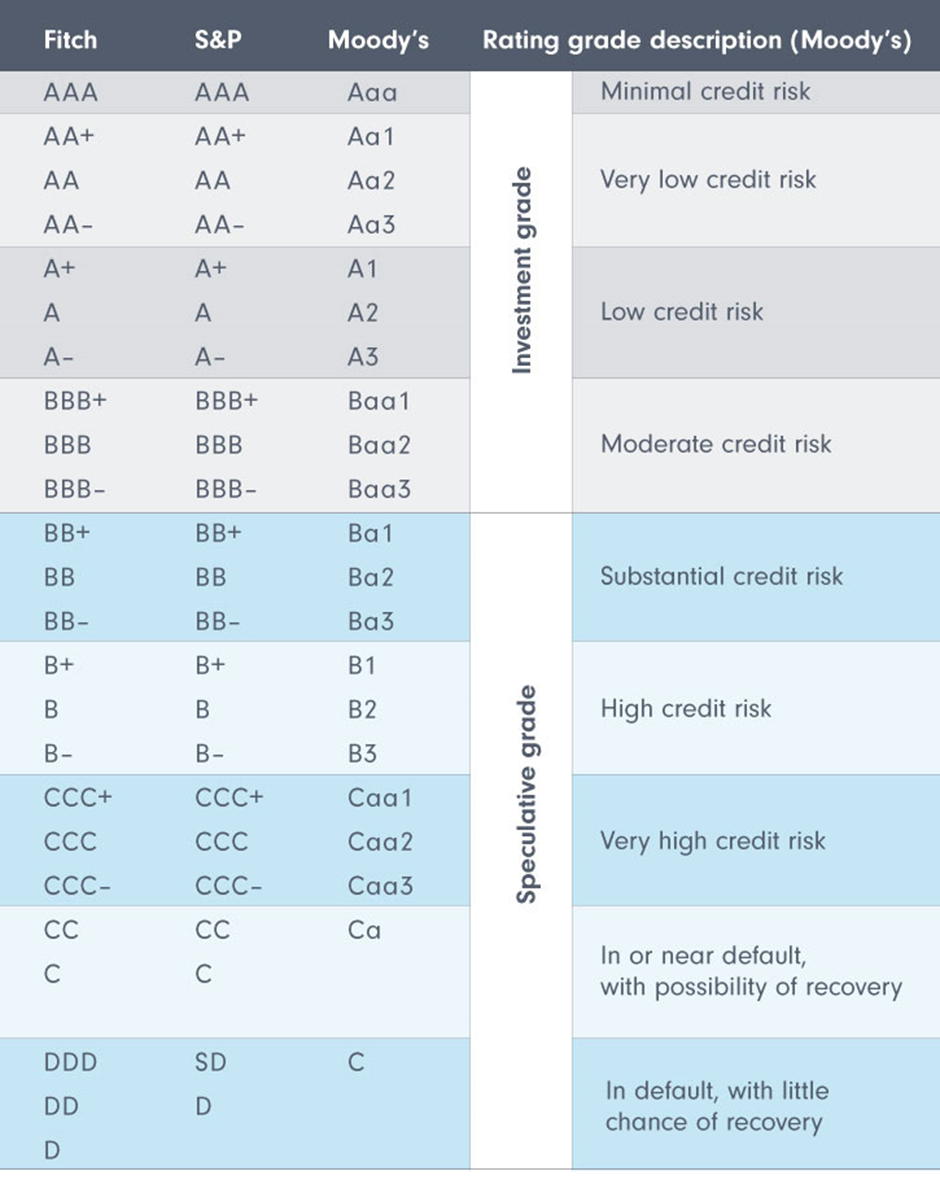When you lend money to a friend, there is always the danger you will not get it all back. It is a chance you must take. With fixed income investing, this uncertainty is known as credit risk – the ability of the issuer to repay the capital or interest to an investor.

How is credit risk assessed?
The answer to this question lies in a discipline called credit risk analysis. This considers factors such as operating margins, fixed expenses, overhead burdens and cash flow, with the goal of providing a fundamental view of a company’s financial ability to repay its obligations.
A common method of credit risk assessment called ‘bottom up analysis’ seeks to study individual companies’ accounts and business prospects in detail to determine how likely they are to honour their debts. For instance, a poorly performing company may bear high credit risk, despite a favourable economic backdrop, while a well-managed company could still be a relatively safe investment, even if the economy is slowing.
Credit rating agencies carry out such assessments of bond issuers, whether companies or government entities. The primary bond rating agencies are Standard & Poor’s (S&P), Moody’s and Fitch Ratings. Individual bonds are rated broadly as investment grade or high yield – commonly known as ‘junk’ bonds – and under these two grades, bonds are assigned more specific ratings from AAA to D.

In general, a bond with higher credit risk (and lower price) will carry a higher yield, bearing in mind that yield moves in the opposite direction of price. A bond’s rating can be downgraded or upgraded by the rating agencies, which could have implications on price.
Credit risk management
In a bond fund, which is a basket of dozens or hundreds of securities within one bond portfolio, the portfolio manager will look at both the interest rate sensitivity and credit risk of the holdings in a portfolio. It is their job to make sure it is properly diversified with the correct balance struck between risk and reward.
If we look at this differently – the process is similar to the methodology that a bank manager uses in undertaking credit risk management. There will be some loans which are riskier than others, in terms of the borrower’s ability to pay back the capital or principal, whereas others will be safer and require less ongoing scrutiny.
The purpose of a bond’s covenant
The exact terms and conditions attached to a fixed income instrument are contained in the bond’s covenant. This is a legal document which sets out the key metrics that the issuer must meet to safeguard its ability to pay back and service (i.e. pay interest on) the bond. For example, there may be a cap imposed on the amount of debt that a company can have on its balance sheet in proportion to its total assets.
How do credit defaults and credit losses vary?
An essential part of credit risk analysis is trying to determine how much capital will be recovered in the event of a default.
Here, it is worth distinguishing between the defaulted amount and the ultimate capital loss. With fixed income instruments, it is often the case that the actual capital loss is lower than the defaulted amount because of recoveries. This can be because the creditor, or lender, can reach an agreement with the debtor, or borrower, to make the final repayment of the outstanding loan easier. Examples of this could be newly negotiated contract terms, such as a slightly lower interest rate or a longer repayment term. Therefore, with this process, there are parallels with what might happen if a borrower is at risk of defaulting on their mortgage and the lending that a bank subsequently decides to revise the terms of its loan.
Fund structure – an investor perspective
Some bond funds may invest in both investment grade quality and high yield bonds. It is important for investors to read a fund's Product Disclosure Statement and Target Market Determination to make sure they fully understand the fund’s credit quality guidelines and whether the fund is suitable for their needs and risk appetite.
Since bond funds are made up of many individual bonds, diversification can help mitigate the credit risk of an issuer defaulting or being downgraded, which would affect bond prices. An investment grade bond fund will typically have no less than 80% allocated to investment grade bonds; whereas a high yield bond fund will usually hold most of its assets in non-investment grade bonds.
